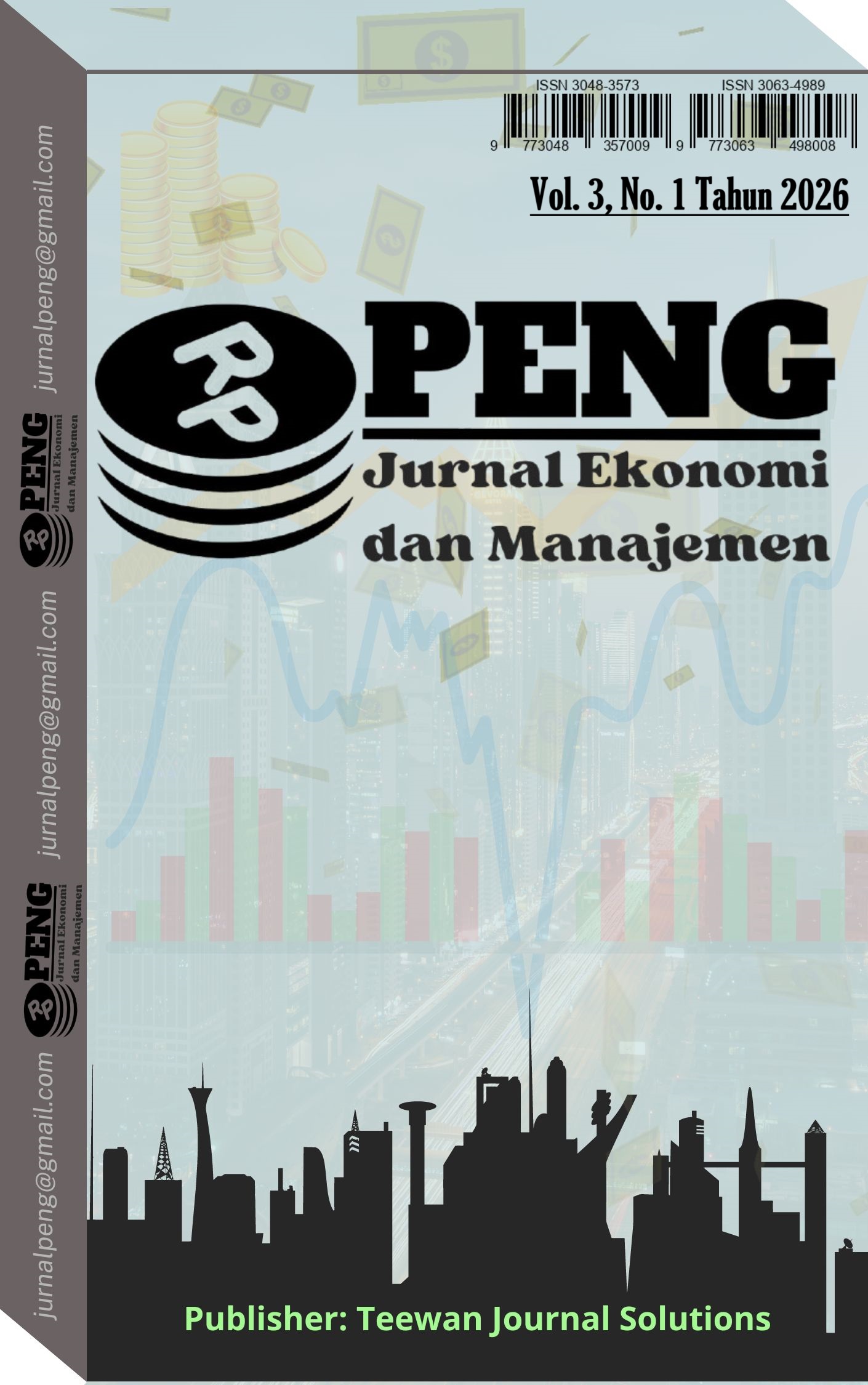Pengaruh Pendidikan dan Pengangguran terhadap Tingkat Kemiskinan di Kabupaten Muaro Jambi
DOI:
https://doi.org/10.62710/mqvv7r24Keywords:
Education, Unemployment, poverty, muaro jambi regencyAbstract
This study aims to analyze the influence of education and unemployment on poverty levels in Muaro Jambi Regency. Education and unemployment are considered important socioeconomic factors that directly affect community welfare. The research employs a quantitative approach using secondary data obtained from the Central Bureau of Statistics (BPS) of Jambi Province and Muaro Jambi Regency. The variables used in this study include education (measured by average years of schooling), unemployment (measured by the open unemployment rate), and poverty (measured by the percentage of poor population). The analytical method applied is multiple linear regression to examine the partial and simultaneous effects of the independent variables on poverty. The results show that education has a significant negative effect on poverty, indicating that a higher level of education reduces poverty. Conversely, unemployment has a significant positive effect on poverty, implying that an increase in unemployment raises the poverty rate. Furthermore, education and unemployment simultaneously have a significant effect on poverty levels in Muaro Jambi Regency. The findings suggest that efforts to reduce poverty should focus on expanding access to education and reducing unemployment through job creation programs and skill development. These results are expected to serve as a reference for policymakers in formulating poverty alleviation strategies in Muaro Jambi Regency
Downloads
References
Acemoglu, D., & Robinson, J. (2012). Why nations fail: The origins of power, prosperity, and poverty. Crown Business.
Badan Pusat Statistik. (2024). Statistik Ekonomi Indonesia. Jakarta: BPS.
Badan Pusat Statistik (BPS). (2023). Kemiskinan dan ketimpangan. Jakarta: BPS RI.
Becker, G. S. (1993). Human capital: A theoretical and empirical analysis with special reference to education (3rd ed.). Chicago: The University of Chicago Press.
Bank Indonesia. (2024). Laporan Perekonomian Indonesia. Jakarta: BI.
Dedi, & Rita. (2023). Analisis pengaruh investasi terhadap pertumbuhan ekonomi Indonesia. Jurnal Ekonomi dan Bisnis, 10(1), 55–70.
Hidayat, M. (2022). Foreign direct investment and economic growth: A sustainable development perspective. Jurnal Ekonomi Pembangunan, 20(1), 1–15.
IMF. (2023). Global financial stability report. Washington, DC: IMF.
Kusuma, R., & Wulandari, A. (2020). Pengaruh pertumbuhan ekonomi dan pengangguran terhadap kemiskinan di Indonesia. Jurnal Ekonomi Pembangunan, 18(1), 45–57.
Mankiw, N. G. (2018). Principles of economics (8th ed.). Boston: Cengage Learning.
Nasir, M., Hidayat, A., & Putri, R. (2021). Digital transformation and industrial efficiency in emerging economies. Journal of Development Studies, 57(8), 1123–1137.
Natasya, A. (2022). Pengaruh pendidikan dan tingkat pengangguran terbuka terhadap kemiskinan di Provinsi Aceh. Jurnal Ekonomi Regional, 7(2), 123–134.
OECD. (2022). Investing in sustainable growth. OECD Publishing.
Putra, A., & Sari, D. (2020). Human capital and innovation capacity: Evidence from ASEAN countries. Asian Economic Journal, 34(3), 210–229.
Putri, R. A., & Putri, S. (2021). Pengaruh upah minimum, tingkat pengangguran terbuka, pendidikan, dan pengeluaran pemerintah terhadap kemiskinan di Indonesia. Jurnal Paradigma Ekonomi, 16(2), 101–115.
Romer, P. (1990). Endogenous technological change. Journal of Political Economy, 98(5), S71–S102.
Sari, M. (2019). Hubungan pendidikan, pengangguran, dan kemiskinan di Sumatera. Jurnal Ekonomi dan Kebijakan Publik, 10(1), 55–68.
Schwab, K. (2017). The fourth industrial revolution. World Economic Forum.
Sufriadi, D. (2024). Workshop kewirausahaan: Menumbuhkan jiwa enterpreneurship generasi Z di era kampus merdeka. Jurnal AMPOEN, 1(2), 21–26.
Sukirno, S. (2016). Makroekonomi: Teori pengantar (Edisi Ketiga). Jakarta: Rajawali Pers.
Todaro, M. P., & Smith, S. C. (2015). Economic development (12th ed.). Harlow: Pearson Education Limited.
UNDP. (2023). Human development report 2023. New York: UNDP.
World Bank. (2023). World development indicators. Retrieved from https://data.worldbank.org/
Yuliana, D. (2021). Faktor-faktor yang memengaruhi kemiskinan di Provinsi Jambi. Jurnal Perspektif Ekonomi Pembangunan Daerah, 5(1), 77–89.
Downloads
Published
Issue
Section
License
Copyright (c) 2025 Solmidawati, Nurdin, Yolanda Sari (Author)

This work is licensed under a Creative Commons Attribution-NonCommercial-ShareAlike 4.0 International License.










